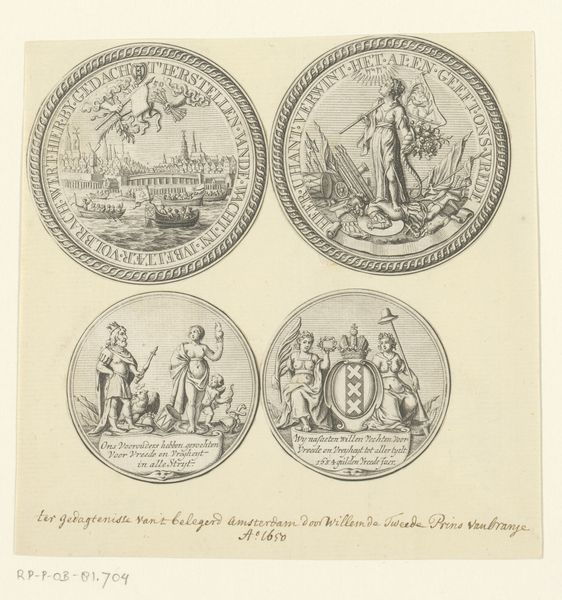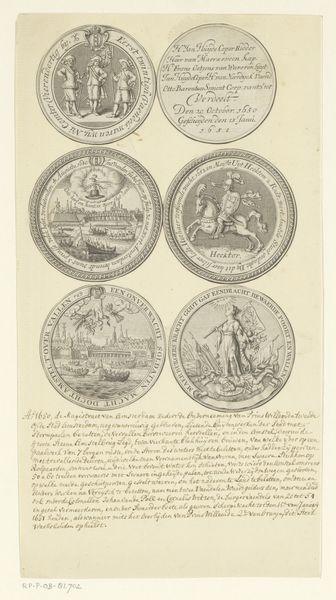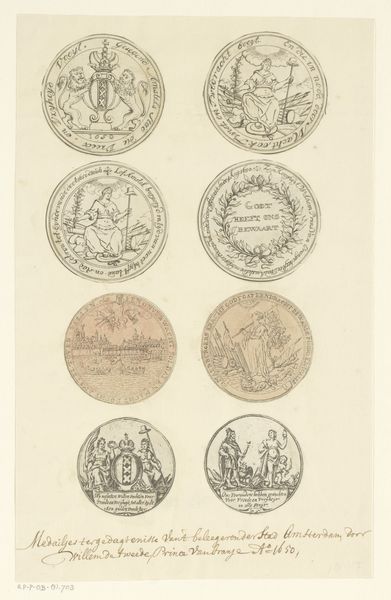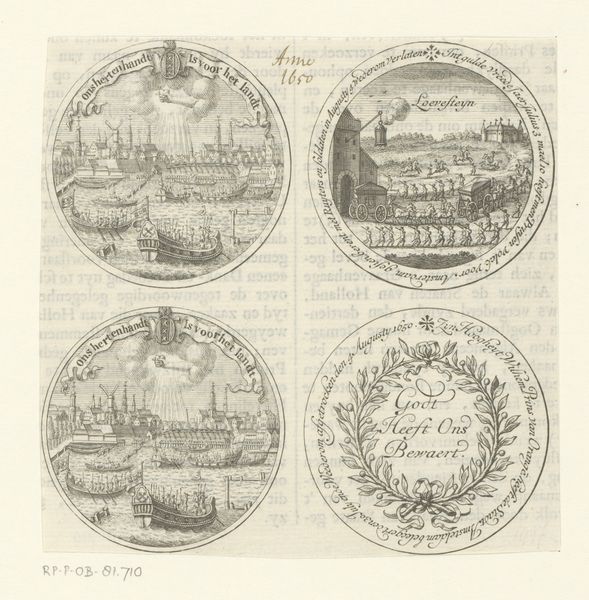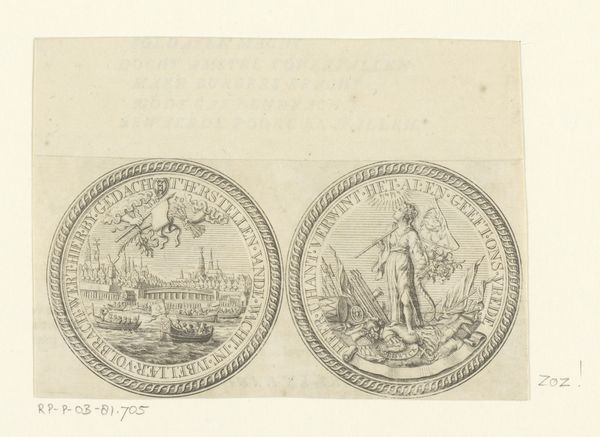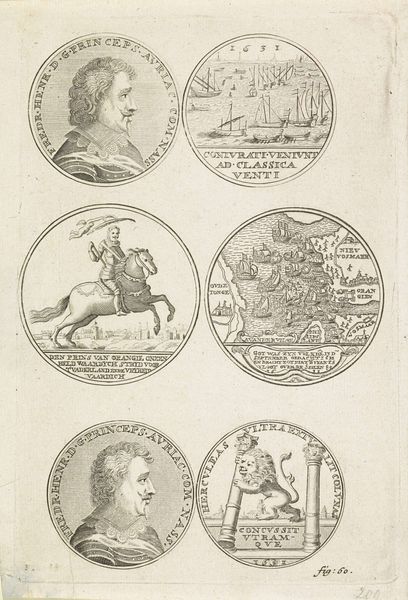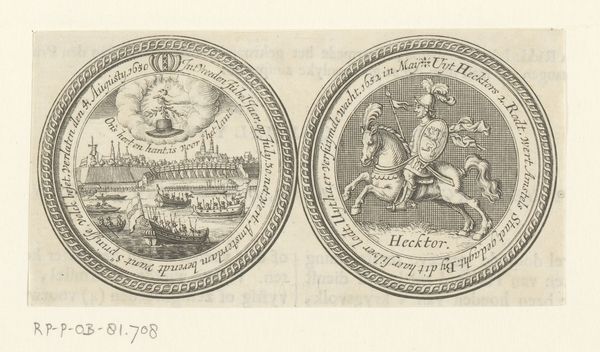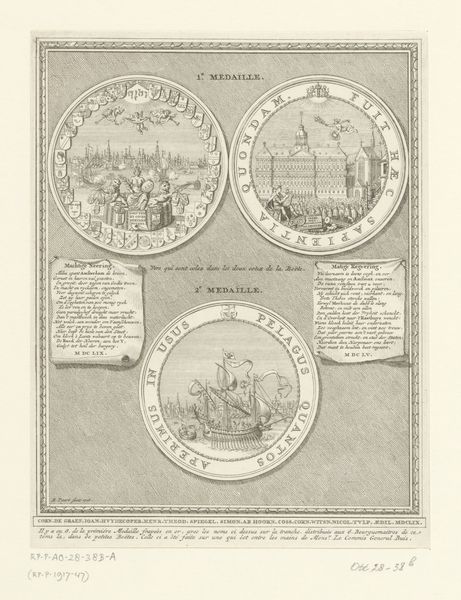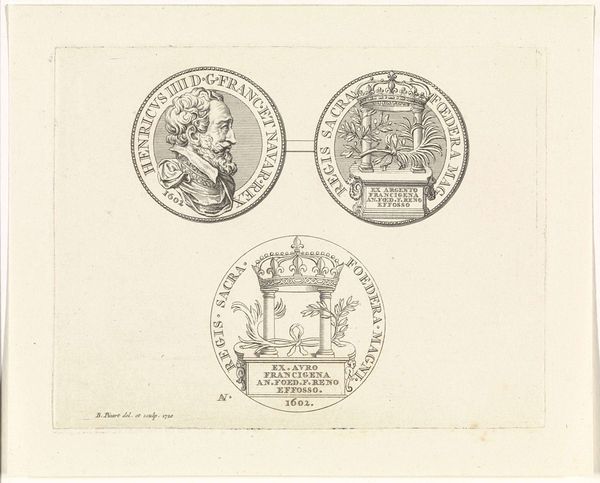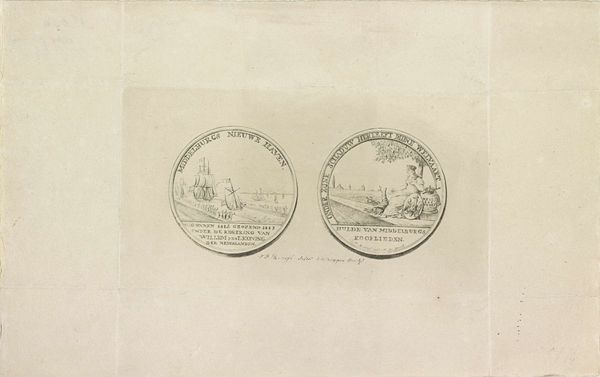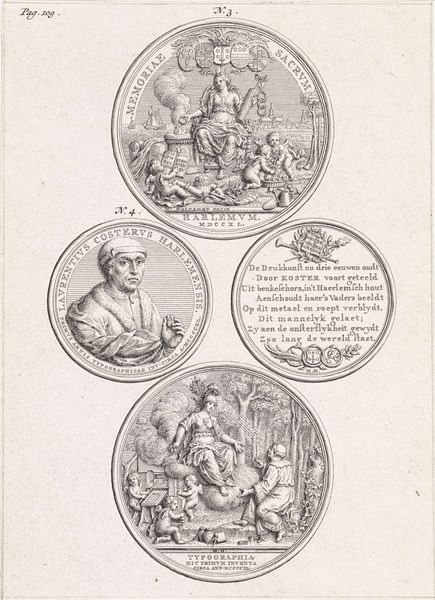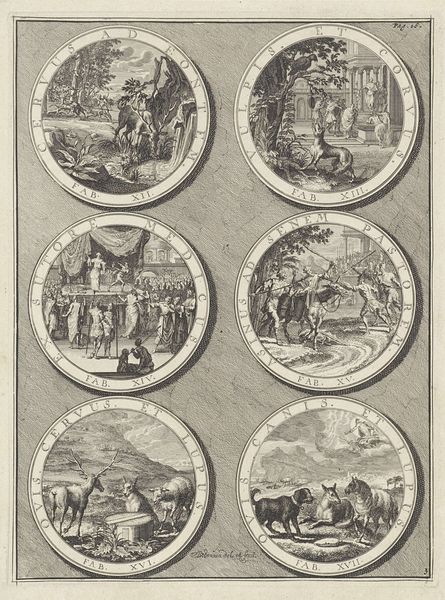
Drie penningen op het beleg van Amsterdam door Willem II, 1650 1724 - 1726
0:00
0:00
anonymous
Rijksmuseum
Dimensions: height 194 mm, width 149 mm
Copyright: Rijks Museum: Open Domain
These are prints relating to the siege of Amsterdam in 1650, made by an anonymous artist. They were probably etched, a printmaking process that involves using acid to bite into a metal plate, creating lines that can then be inked and printed. The material qualities are of a piece with the event commemorated: economical, reproducible, and easily distributed. Think of them as the social media of their day. Note that they memorialize not a military victory, but a civic one: Amsterdam’s ability to withstand attack. This gets to the heart of the story etching can tell. It was not the province of a highly trained artisan, like an engraving. Rather, its relative ease and speed of production made it the perfect medium for circulating images and ideas widely. These prints were made by someone keenly attuned to the pulse of public opinion. And in their very nature, they helped to shape it too. So they remind us to consider the means of production that bring artworks into being, and how that act of making shapes society.
Comments
No comments
Be the first to comment and join the conversation on the ultimate creative platform.
